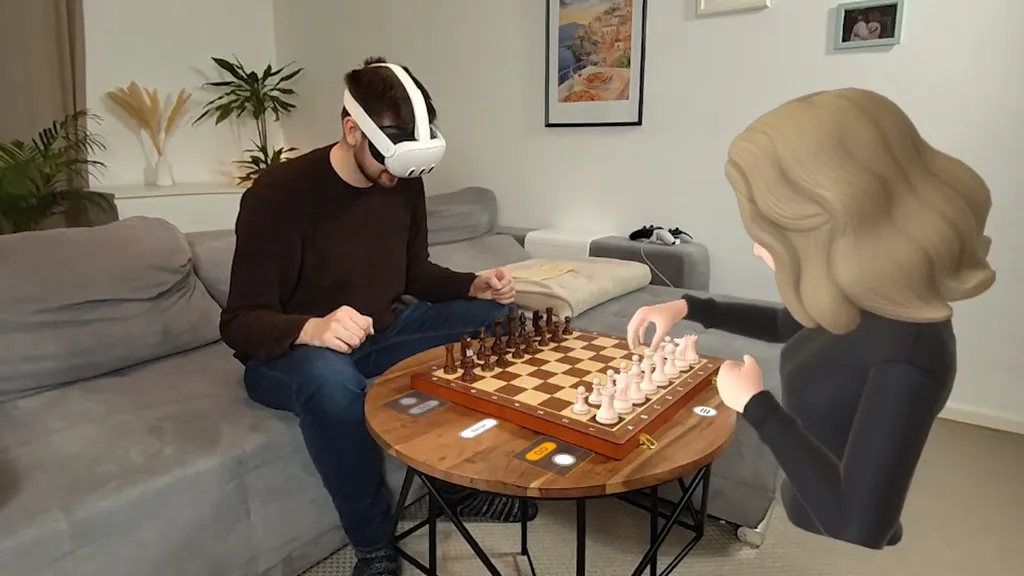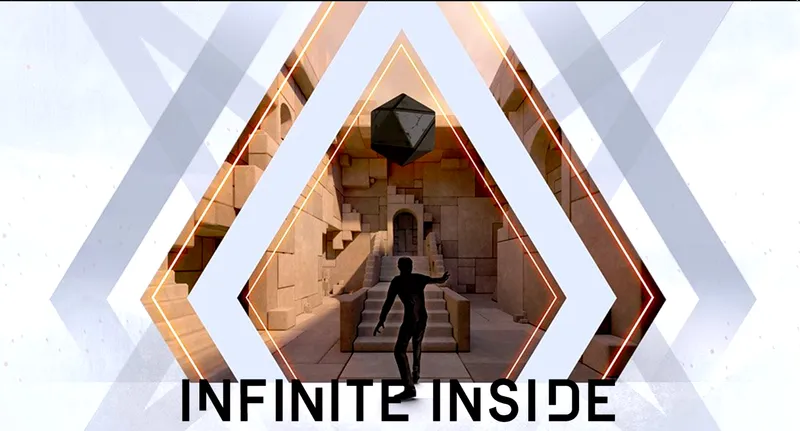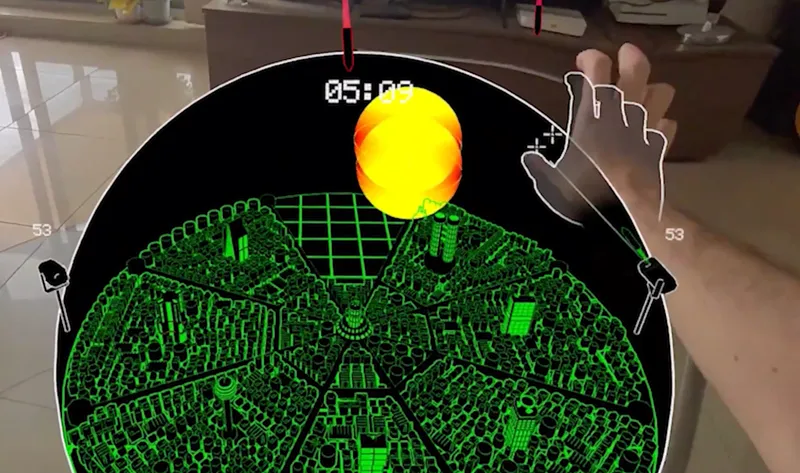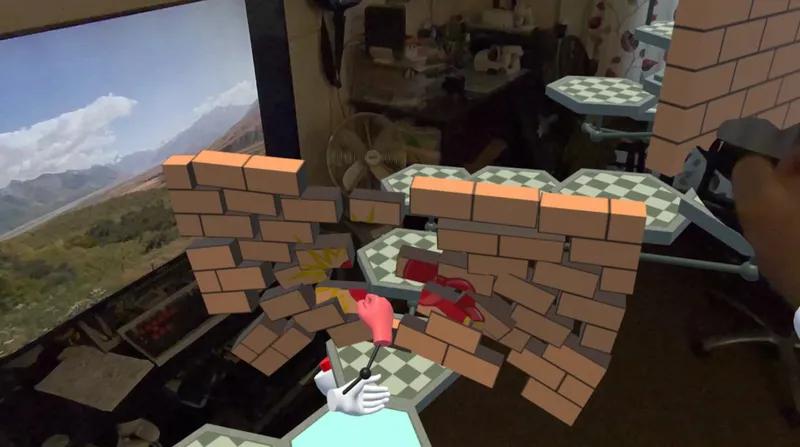MR Chess is currently on Quest App Lab. And… it’s chess, sure, like it says on the label, but it also raises and attempts to answer questions about what ‘mixed reality’ means on the Quest in 2024 and what it could mean in the years ahead.
Through that lens especially, MR Chess is a bargain — plus you happen to get a chess game to go with it.
VR Chess
Chess in VR mode is a straightforward review: You already know the pieces and rules. It’s hand-tracking only; you move virtual pieces by pinching your fingers. There are gentle cosmetic modifications: pick up a piece and blue dots appear to show legal moves; place a piece illegally and its resting point highlights red until you return the piece to a valid position. Each player also has a timer. You can play the computer (levels 1-9), you can play a friend who owns the app, you can find other players in the discord.
What should MR be?
Mixed Reality should empower you to engage with your environment in new, invigorating ways. This is where MR Chess asks and answers the right questions.
By default, before starting any Quest VR experience, your headset asks you to set up a boundary. This is good, obviously, for safety reasons, but also antithetical to one of MR’s great promises.
Meta’s own First Encounters MR app delightfully breaks the VR/MR wall visually, but there’s still a hard line between you and your physical surroundings.
MR Chess breaks down that physical barrier. Lay out your actual board and chess pieces to use in a match. What a delight to feel the actual weight of a rook in your hand and the haptic response of placing it and releasing it!
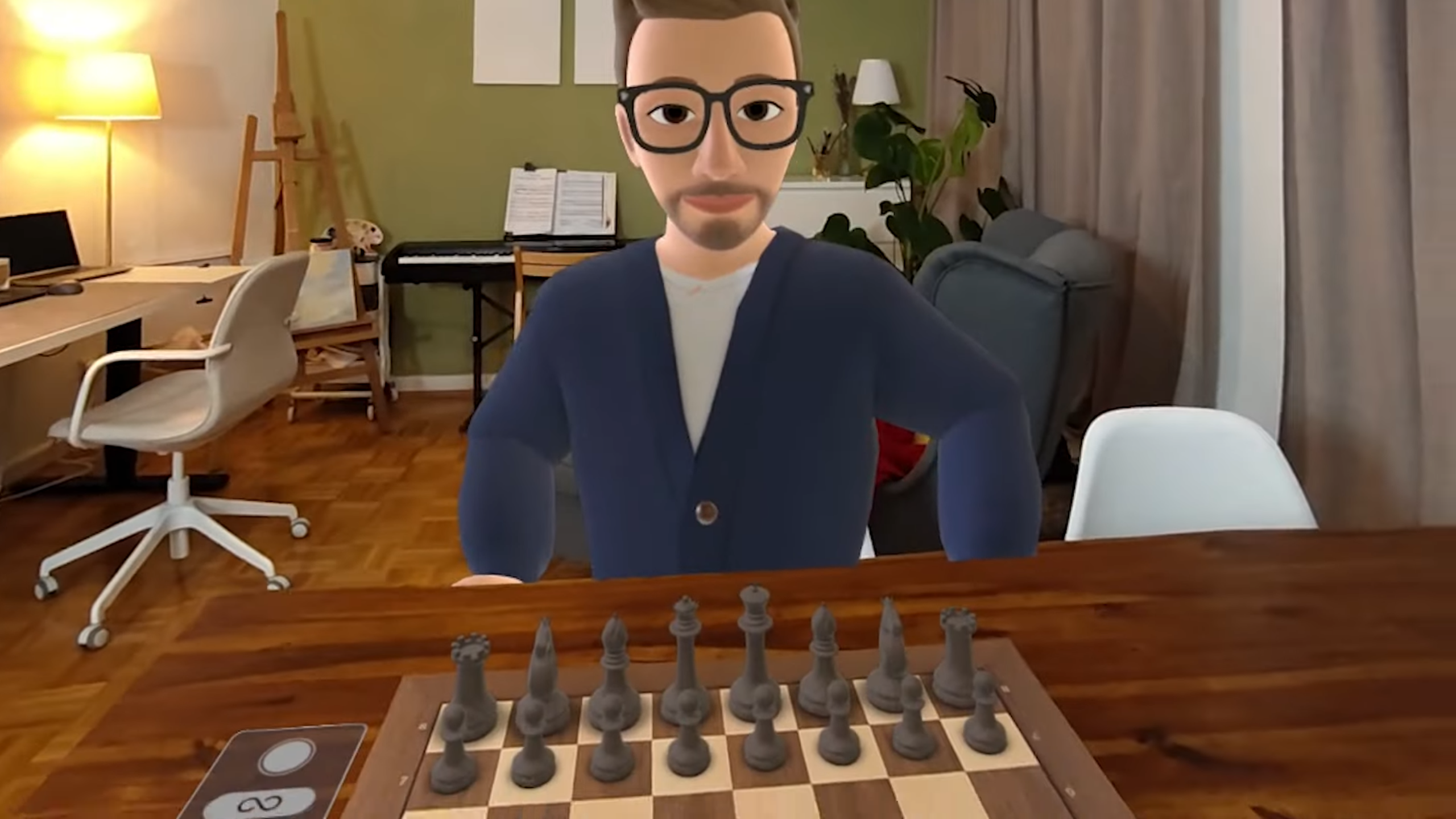
Meta Failure and Chess Potential
Meta’s hand tracking in Quest has rough edges but deserves more praise. Of course, often, your hands should be the controllers of your environment, as they are in everyday life. (See related: the controllerless Apple Vision Pro.) But in that same vein, anything else should be a controller, whenever that other thing offers the right weight, resistance, and shape for the job.
Chess is a perfect entry point to appreciate and imagine what this feels like. Shooters in VR Arcades that equip you with a full-size replica machine gun in a warehouse-sized room accomplish the same idea; chess can be played from the comfort of your home.
MR Chess is flawed; its tracking abilities are stifled by limits Meta places on camera access for apps. In its current iteration, Chess's mixed reality mode isn’t actually tracking your physical pieces. It relies on the same hand tracking & pinching of VR mode but with a transparency filter laid on. Particularly if your pieces are a bit taller or shorter than the generically-sized default VR set, you can be liable to desync where your physical piece has been placed from where your headset believes the virtual piece resides. It’s correctable by quickly toggling VR mode back on, but still, a reminder of 2024 Meta tech’s limitations. I wound up finding it easiest to play with my real pieces on top of a virtual board.
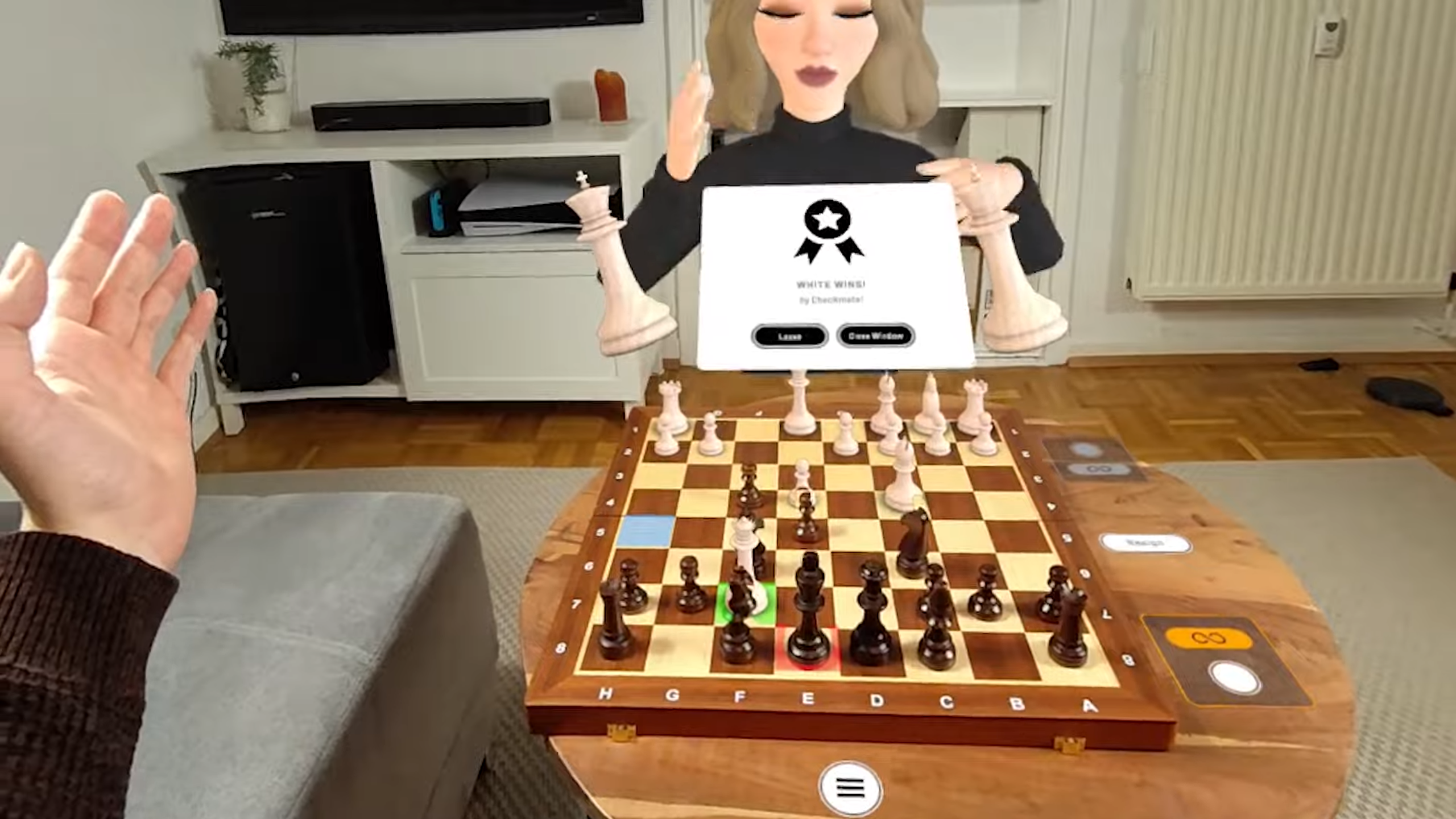
Meta has an unenviable task: Surely camera access limitations are a deliberate privacy measure, but could Meta open the aperture enough to afford imaginative new experiences while continuing to protect their users’ safety?
MR Chess has a highly enviable task: It brims with potential. For competitive players, it might be quite advantageous to practice on physical boards replicating the depth and sightline of live tournament matches (as opposed to, say, chess.com's top-down view). For beginners and moderates, it could introduce checkmate-in-one puzzles, or could introduce AI, to play against you or alongside you as a coach.
For VR and MR enthusiasts: If you're curious to push the limits of your device and imagination, MR Chess is well worth a spin.

